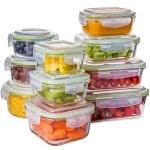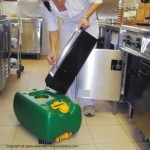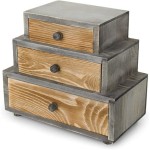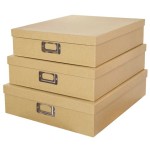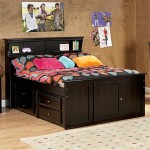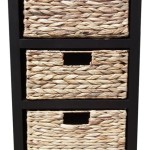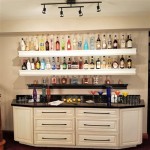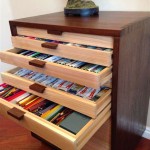Maximizing Space: Innovative Storage Solutions for Contemporary Living
In the face of increasingly smaller living spaces and a growing accumulation of possessions, the need for effective space-saving storage solutions has never been more critical. Organizing belongings efficiently is not merely about aesthetics; it directly impacts functionality, accessibility, and overall quality of life within a home or apartment. Strategic storage strategies can transform cramped and cluttered environments into optimized, comfortable, and easily navigable spaces. This article will explore various techniques and methods designed to maximize storage potential in diverse living environments.
Vertical Storage and High Shelving
One of the most underutilized areas in a typical living space is vertical space. Walls, often viewed as purely decorative surfaces, offer immense potential for storage. Implementing vertical storage solutions, such as tall bookshelves, shelving units that extend towards the ceiling, and wall-mounted cabinets, can drastically increase storage capacity without encroaching on valuable floor space. The key to successful vertical storage is accessibility. Items stored at higher levels should be those that are used less frequently, while frequently accessed items should remain within easy reach.
Tall bookshelves are not limited to housing books. They can also accommodate decorative items, storage baskets, and even folded clothing, offering a versatile storage solution for various rooms. When selecting bookshelves, consider adjustable shelves to accommodate items of varying heights. This adaptability ensures that space is not wasted between shelves and optimizes the storage capacity of the unit. Utilizing uniform storage baskets not only creates a visually appealing aesthetic but also allows for the organization of smaller items within the larger shelving unit.
Wall-mounted cabinets are particularly useful in kitchens and bathrooms, where floor space is often limited. These cabinets can store dishes, pantry items, toiletries, and cleaning supplies, freeing up valuable counter and floor space. Opting for cabinets with mirrored doors in bathrooms can further enhance the sense of space by creating an illusion of a larger room. The installation of wall-mounted cabinets requires careful planning to ensure secure mounting and proper weight distribution. It is essential to use the appropriate hardware and tools to prevent accidents and damage to the wall.
Beyond cabinets and shelves, vertical space can be further maximized with the use of hooks and hanging organizers. Hooks can be used to hang coats, hats, bags, and even kitchen utensils, keeping them off the floor and countertops. Hanging organizers, typically made of fabric or mesh, can be hung on the back of doors or inside closets to store shoes, accessories, and other small items. These organizers are particularly useful in bedrooms and entryways where clutter tends to accumulate quickly.
When implementing vertical storage solutions, it is crucial to maintain a sense of visual balance to prevent the space from feeling overwhelming. Avoid overcrowding shelves and cabinets, and consider incorporating decorative elements to break up the monotony of storage. This can be achieved by adding plants, artwork, or decorative boxes to the shelves, creating a more inviting and aesthetically pleasing environment.
Multifunctional Furniture and Hidden Storage
In compact living spaces, furniture pieces that serve multiple purposes are invaluable. Multifunctional furniture maximizes space utilization by combining storage with everyday functionality. Examples include storage ottomans, sofa beds with built-in storage, coffee tables with drawers or lift-top mechanisms, and beds with drawers underneath. These pieces not only provide comfortable seating, sleeping, or surface space but also offer hidden storage compartments for blankets, pillows, books, and other items.
Storage ottomans are versatile pieces that can serve as footrests, extra seating, and storage containers. They are available in various sizes, shapes, and materials, making them adaptable to different decorating styles. Ottomans with hinged lids provide easy access to stored items, while those with removable tops can be used as trays or serving surfaces. These ottomans are particularly useful in living rooms and bedrooms for storing blankets, magazines, and remote controls.
Sofa beds with built-in storage are ideal for guest rooms or living rooms that occasionally need to accommodate overnight guests. These sofas typically feature hidden storage compartments beneath the seating area or within the armrests. These compartments can be used to store bedding, pillows, and other guest essentials, keeping them readily accessible but out of sight when not needed. When selecting a sofa bed with storage, consider the ease of accessing the storage compartment and the durability of the mechanism.
Coffee tables with drawers or lift-top mechanisms provide convenient storage for items commonly used in the living room, such as remote controls, magazines, and coasters. Lift-top coffee tables can also be used as temporary workstations or dining surfaces, making them particularly useful in small apartments where space is limited. When choosing a coffee table with storage, consider the size and configuration of the storage compartments to ensure they meet your specific needs.
Beds with drawers underneath are a practical solution for maximizing storage in bedrooms. These drawers provide ample space for storing clothing, shoes, and bedding, freeing up valuable closet space. Some beds also feature headboards with built-in shelves or compartments, offering additional storage for books, lamps, and other bedside essentials. When selecting a bed with storage, consider the height of the bed and the ease of accessing the drawers.
Beyond these common examples, multifunctional furniture can also include dining tables that can be folded or extended to accommodate different numbers of guests, desks with built-in storage compartments, and even mirrors with hidden jewelry cabinets. The key to selecting effective multifunctional furniture is to consider your specific storage needs and the overall layout of your living space. Choosing pieces that seamlessly integrate storage with functionality can significantly enhance the efficiency and comfort of your home.
Decluttering and Organization Strategies
Even with the most innovative storage solutions, clutter can quickly accumulate if not managed effectively. Regular decluttering and organization are essential for maintaining a tidy and efficient living space. This involves periodically reviewing belongings, discarding items that are no longer needed or used, and implementing systems for organizing and storing remaining items in an efficient and accessible manner.
One effective decluttering strategy is the "one in, one out" rule. For every new item that enters the home, an old item of similar type should be discarded. This principle helps to prevent the accumulation of unnecessary possessions and keeps clutter under control. It is particularly useful for items such as clothing, shoes, books, and kitchenware.
Another helpful decluttering technique is to sort belongings into three categories: keep, donate/sell, and discard. Items that are frequently used and in good condition should be kept. Items that are no longer needed but are still in good condition can be donated to charity or sold online or at a consignment shop. Items that are damaged, broken, or no longer useful should be discarded responsibly. This process helps to streamline belongings and reduce the amount of unnecessary items in the home.
Once belongings have been decluttered, it is important to implement systems for organizing and storing remaining items. This may involve using storage containers, labels, and dividers to create designated spaces for different types of items. Clear storage containers are particularly useful for storing items in closets and cabinets, as they allow you to easily see what is inside without having to open them. Labels can be used to identify the contents of storage containers and drawers, making it easier to find what you need. Dividers can be used to organize drawers, shelves, and closets, preventing items from becoming jumbled and cluttered.
Effective organization also involves optimizing the layout of closets and cabinets. This may involve using adjustable shelves, hanging rods, and drawer organizers to maximize the available space. Shelves should be adjusted to accommodate items of varying heights, and hanging rods should be used to hang clothing items that are prone to wrinkling. Drawer organizers can be used to separate socks, underwear, and other small items, preventing them from becoming lost or tangled.
Maintaining a clutter-free environment requires ongoing effort and commitment. Regular decluttering and organization should be incorporated into your routine, even if it's just for a few minutes each day. Setting aside time each week or month to review belongings, eliminate clutter, and reorganize storage spaces can help to prevent clutter from accumulating and ensure that your home remains tidy and efficient. Furthermore, adopting a minimalist mindset, prioritizing quality over quantity, and being mindful of purchases can all contribute to a less cluttered and more organized lifestyle.

Space Saving Storage Solutions For Small Spaces Just Cabins

28 Space Saving Solutions And Storage Ideas

Space Saving Solutions 33 Creative Storage Ideas Archdaily

16 Best Space Saving Gift Ideas For Small Apartments And Homes

35 Space Saving Diy Storage Ideas For Every Room

Must Try Diy Space Saving Ideas

10 Space Saving Storage Options For The Home

Space Saving Solutions 33 Creative Storage Ideas Archdaily

35 Space Saving Diy Storage Ideas For Every Room

10 Easy Space Saving Diy Projects For Small Homes
Related Posts

